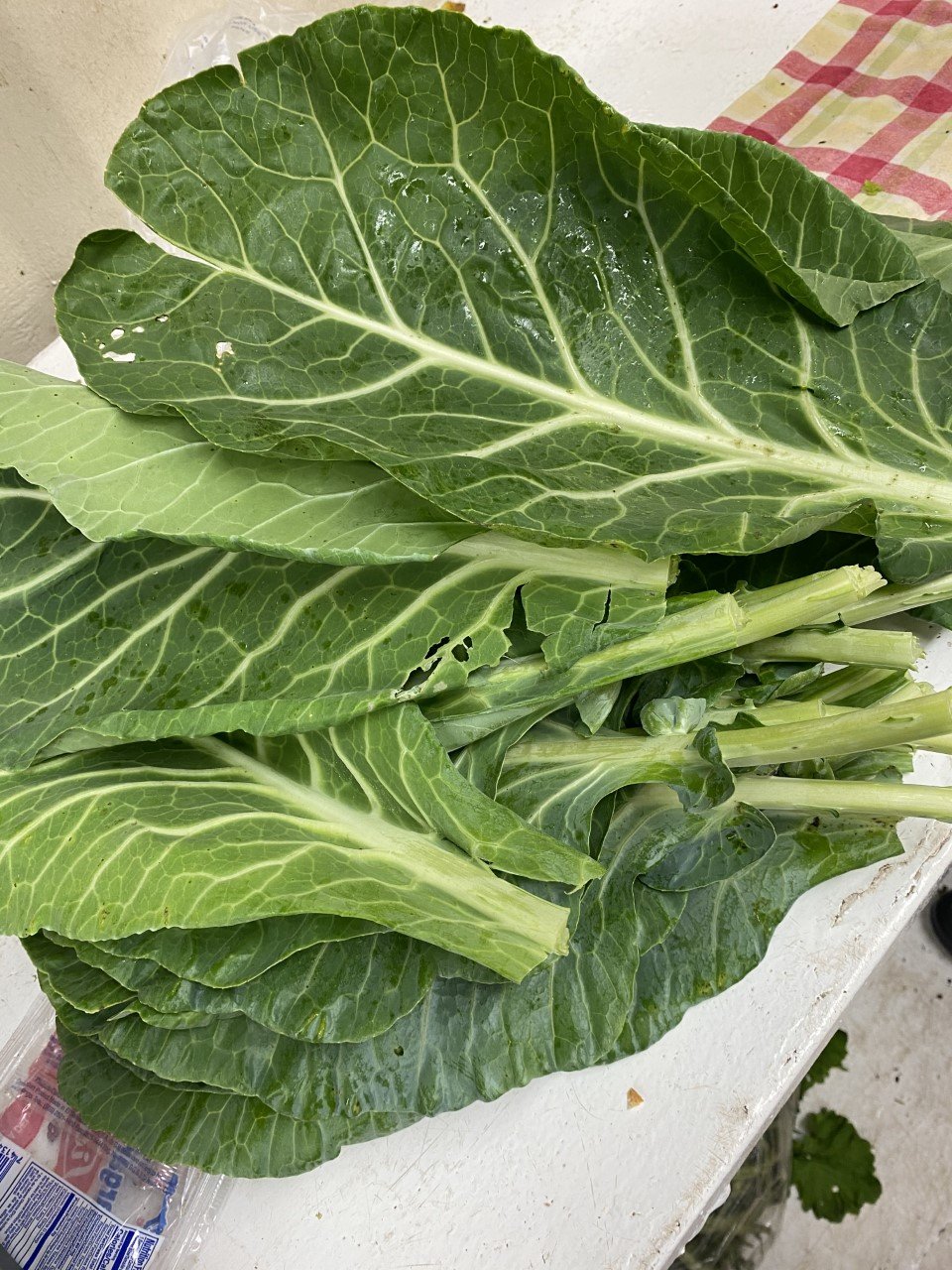 Image 1 of 2
Image 1 of 2

 Image 2 of 2
Image 2 of 2

Collard Green
Collard greens are a member of the Brassica family of vegetables, which means they are cruciferous vegetables. Collard Description
Collards contain vitamin K, A, C, folate, beta-carotene, and other carotenoids. Collard Nutrition
There are a lot of ways to cook collards, but lightly cooking is the way to get the most nutrients. Chop your greens and they are boiled, steamed, or sauteed. Steaming will preserve many of the nutrients. Boiling may leach vitamins and minerals in the water, adding fat to the mixture can help to absorb vitamins and minerals. Collard Cooking
Recipes:
Collard greens are a member of the Brassica family of vegetables, which means they are cruciferous vegetables. Collard Description
Collards contain vitamin K, A, C, folate, beta-carotene, and other carotenoids. Collard Nutrition
There are a lot of ways to cook collards, but lightly cooking is the way to get the most nutrients. Chop your greens and they are boiled, steamed, or sauteed. Steaming will preserve many of the nutrients. Boiling may leach vitamins and minerals in the water, adding fat to the mixture can help to absorb vitamins and minerals. Collard Cooking
Recipes:
Collard greens are a member of the Brassica family of vegetables, which means they are cruciferous vegetables. Collard Description
Collards contain vitamin K, A, C, folate, beta-carotene, and other carotenoids. Collard Nutrition
There are a lot of ways to cook collards, but lightly cooking is the way to get the most nutrients. Chop your greens and they are boiled, steamed, or sauteed. Steaming will preserve many of the nutrients. Boiling may leach vitamins and minerals in the water, adding fat to the mixture can help to absorb vitamins and minerals. Collard Cooking
Recipes:
